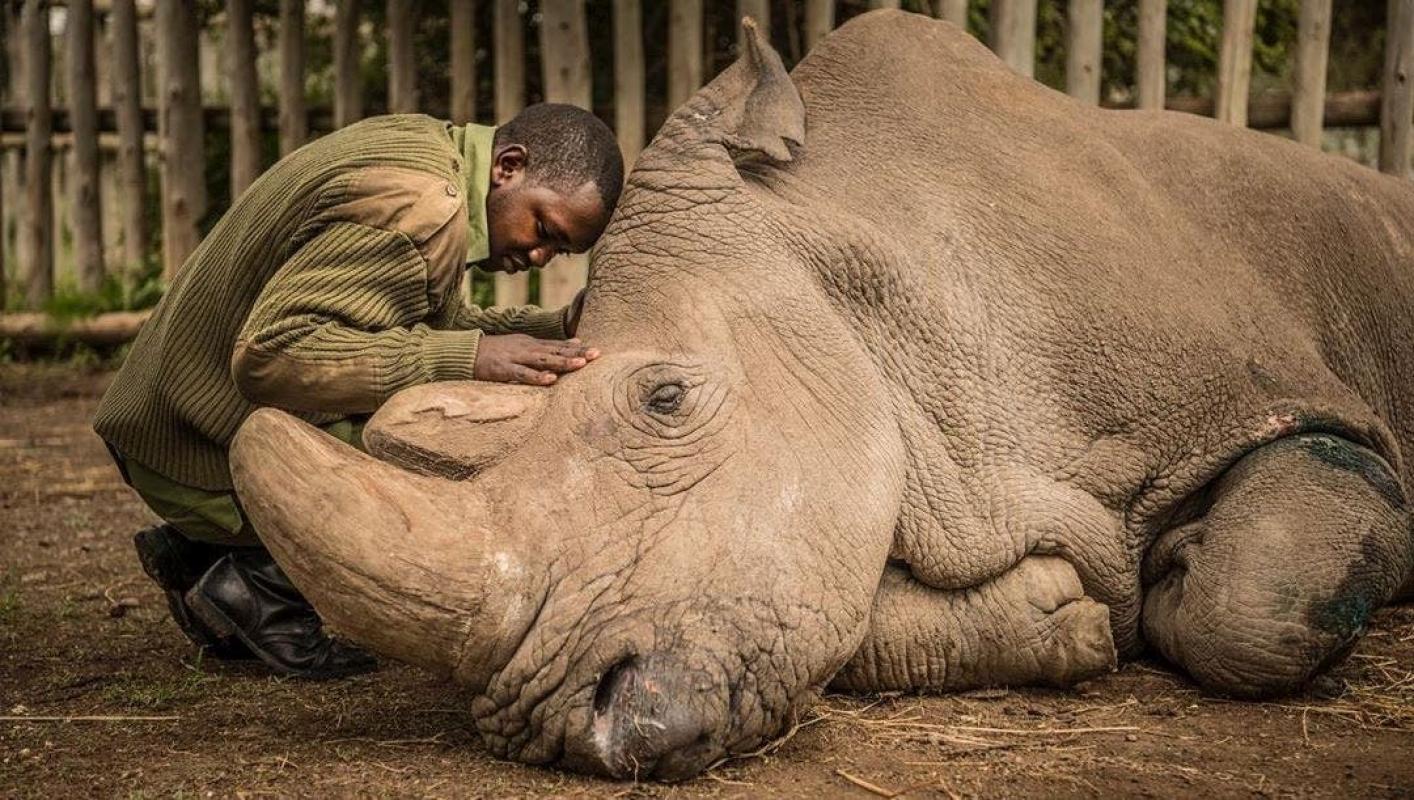NatGeo escoge la muerte del último rinoceronte blanco macho del mundo como mejor foto de la década
 NatGeo escoge la muerte del último rinoceronte blanco macho del mundo como mejor foto de la década
NatGeo escoge la muerte del último rinoceronte blanco macho del mundo como mejor foto de la década
T13 En Vivo
La revista National Geographic confirmó que la fotografía tomada por Ami Vitale, en donde un cuidador se despide del último rinoceronte blanco del norte macho del mundo.
La fotografía data del 18 de marzo de 2018 y fue tomada en Ol Pejeta, en Kenya, donde Sudán vivía en el centro conservación y era cuidado por Joseph Wachira y otros funcionarios.
A través de redes sociales, National Geographic relató que la fotografía muestra cómo "Joseph Wachira comparte los momentos finales con el último rinoceronte blanco del norte macho del mundo".
"Todo estaba en silencio, excepto por la lluvia que caía, un solo pájaro regañando y la tristeza amortiguada de los cuidadores de Sudán", añade el escrito de Ami Vitale.
Quien, además, dijo que "ver morir a una criatura, una que es la última de su clase, es algo que espero nunca volver a experimentar. Se sentía como ver nuestra propia desaparición".
"Cuando nos vemos a nosotros mismos como parte de la naturaleza, entendemos que salvar la naturaleza se trata realmente de salvarnos a nostros mismos. Sudán me enseñó eso", dijo la autora de la fotografía.
Antes de su muerte, Sudán había tomado notoriedad mediática producto de su protagonismo en un perfil de Tinder, red social en la que aparecía luego que un grupo de conservacionistas buscaran fondos para poder realizar un tratamiento de fertilidad.
Finalmente, tras la muerte del animal, se confirmó que quedan dos ejemplares hembra, las cuales podrían ser inseminadas de manera artificial para poder preservar la especie.










